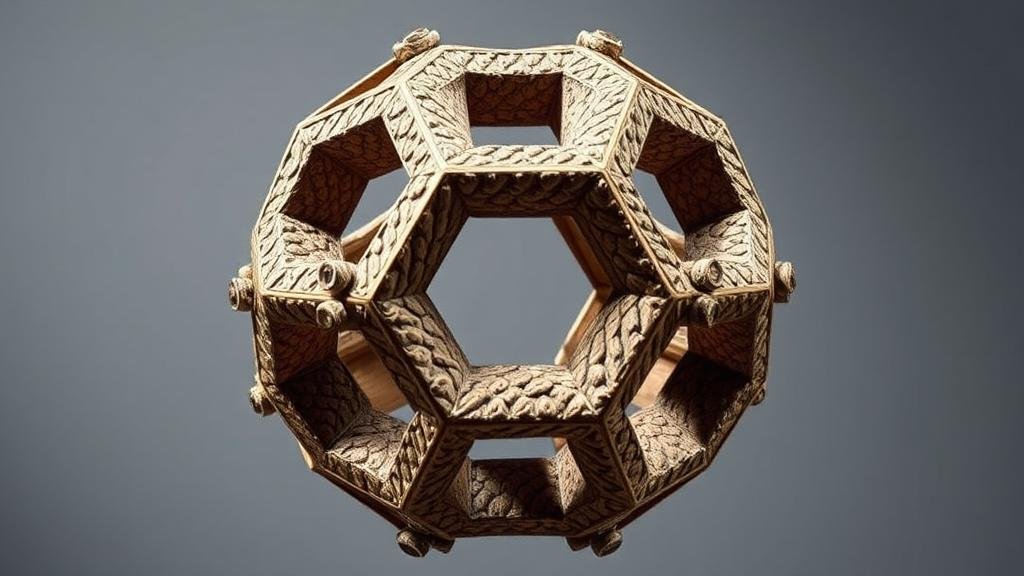Exploring the origins of the “Roman Dodecahedrons,” whose function remains unknown.
Exploring the Origins of the Roman Dodecahedrons
Among the many contributions of the Roman Empire to art and science, the Roman Dodecahedrons stand out as enigmatic relics whose purpose remains a tantalizing mystery. These ornate, twelve-faced polyhedra, often crafted from stone or bronze, feature intricate designs and regularly placed holes on each face. Discovered primarily in the territories of the former Roman Empire, their origins date back to the 2nd or 3rd century AD.
Historical Background
The first Roman Dodecahedrons were unearthed in the early 18th century, with the most notable finds occurring in regions such as modern-day France, Germany, and Switzerland. Notably, the discovery of a bronze example at the Chester Roman site in the UK has also contributed to the dodecahedrons historical significance. Archaeologists have cataloged over 100 examples of these objects, with their locations concentrated in regions that were once part of the Roman Empire.
Despite their historical significance, the dodecahedrons pose intriguing questions about their function. They range in size from 4 cm to 11 cm (approximately 1.5 to 4.3 inches) and are typically made of stone, though some examples have been cast in bronze. r design is mathematically fascinating, featuring twelve pentagonal faces, which has led to various theories about their intended use.
Theories and Speculations
Several theories attempt to unravel the mystery of the Roman Dodecahedrons. Some of the most prominent include:
- Measuring Instruments: One popular theory posits that these dodecahedrons were used as surveying or measuring instruments. Their shapes and uniform faces suggest they could have been employed for measuring angles or distances, similar to the way modern tools assist in land measurement.
- Religious or Cultural Significance: Another theory suggests that the dodecahedron could have had religious or ritualistic significance, possibly linked to the Roman pantheon or as a tool for divination. symmetrical design may have held esoteric meanings that are lost to modern understanding.
- Gaming Instruments: Some researchers have proposed that the dodecahedrons were utilized in games, akin to dice. The evenly spaced holes might have been designed to allow for the random selection of numbers or outcomes in ancient Roman board games.
- Calendrical Functions: There is speculation that these objects might have served a calendrical purpose, possibly to track celestial events or seasonal changes. The dodecahedron’s configuration could correspond to various calendar systems used in antiquity.
Real-World Implications and Insights
While the applications of the Roman Dodecahedrons may seem limited within historical discussions, their ambiguous purpose invites contemporary reflection on the multifaceted ways ancient societies functioned. fact that these objects have been discovered over such a broad geographic area suggests a common significance that transcended regional practices, indicating shared cultural or technological developments among the Romans.
Also, the ongoing search for their purpose illustrates a broader theme in archaeology: the struggle to fully understand the nuances of past civilizations through their artifacts. This is reminiscent of many archaeological finds, where interpretations evolve with new discoveries and insights.
Actionable Takeaways
The mysteries surrounding Roman Dodecahedrons remind us of the complexity of human innovation and expression. Here are a few takeaways for enthusiasts of history and archaeology alike:
- Engage with scholarly research: Many academic articles analyze the Dodecahedron from various perspectives, encouraging deeper understanding of Roman culture.
- Participate in local archaeological talks or workshops: These sessions can provide further insight into how artifacts are studied and their significance in historical contexts.
- Explore museums: Visiting exhibits featuring Roman artifacts, including Dodecahedrons, allows for a tactile connection to history that can deepen appreciation of ancient craftsmanship.
In summary, the Roman Dodecahedrons remain a fascinating yet inscrutable aspect of ancient history, inviting curiosity and admiration. r elegant design, combined with the unanswered questions surrounding them, continues to inspire exploration and discussion among scholars, historians, and the general public alike.



